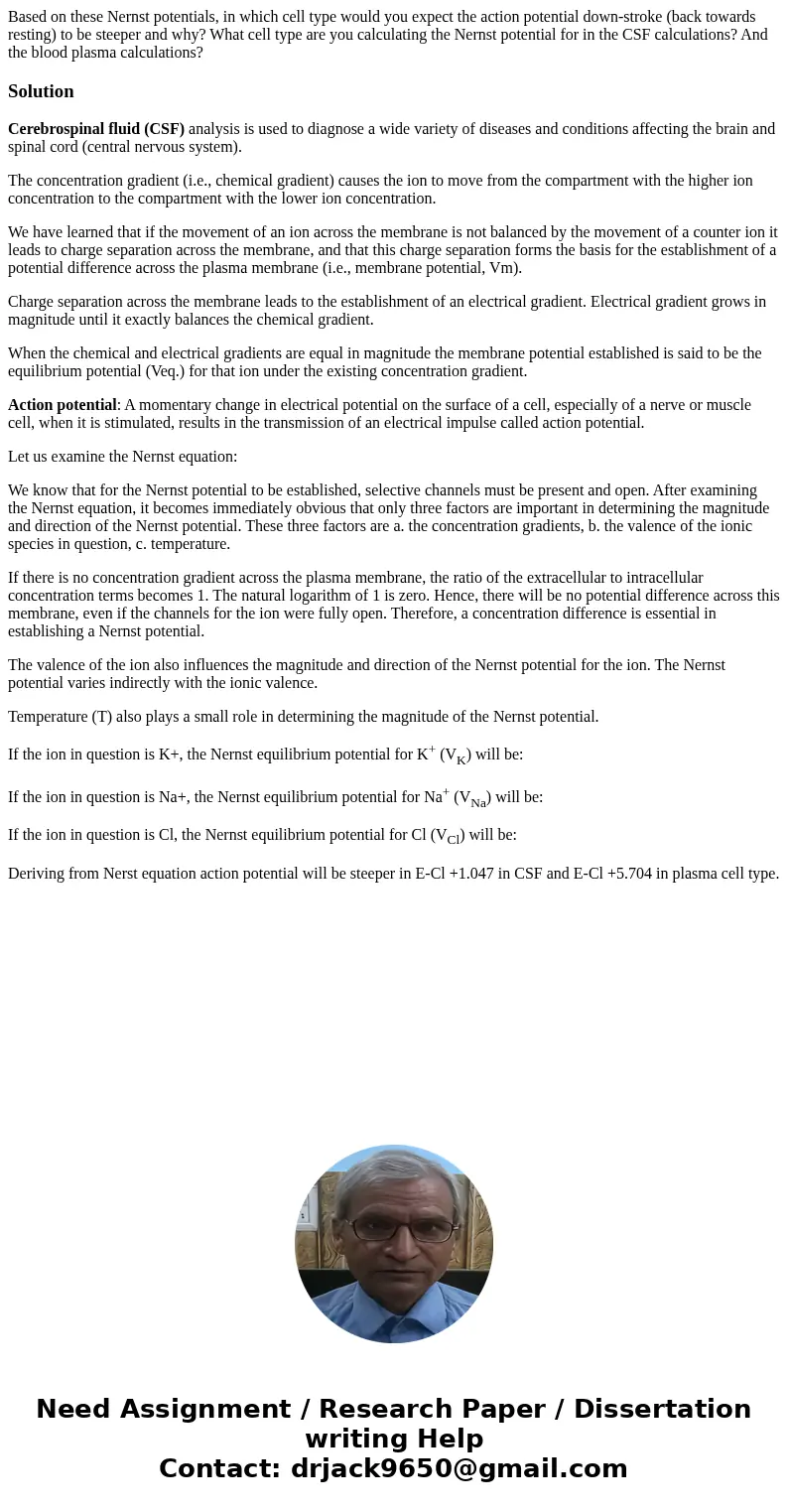Based on these Nernst potentials in which cell type would yo
Solution
Cerebrospinal fluid (CSF) analysis is used to diagnose a wide variety of diseases and conditions affecting the brain and spinal cord (central nervous system).
The concentration gradient (i.e., chemical gradient) causes the ion to move from the compartment with the higher ion concentration to the compartment with the lower ion concentration.
We have learned that if the movement of an ion across the membrane is not balanced by the movement of a counter ion it leads to charge separation across the membrane, and that this charge separation forms the basis for the establishment of a potential difference across the plasma membrane (i.e., membrane potential, Vm).
Charge separation across the membrane leads to the establishment of an electrical gradient. Electrical gradient grows in magnitude until it exactly balances the chemical gradient.
When the chemical and electrical gradients are equal in magnitude the membrane potential established is said to be the equilibrium potential (Veq.) for that ion under the existing concentration gradient.
Action potential: A momentary change in electrical potential on the surface of a cell, especially of a nerve or muscle cell, when it is stimulated, results in the transmission of an electrical impulse called action potential.
Let us examine the Nernst equation:
We know that for the Nernst potential to be established, selective channels must be present and open. After examining the Nernst equation, it becomes immediately obvious that only three factors are important in determining the magnitude and direction of the Nernst potential. These three factors are a. the concentration gradients, b. the valence of the ionic species in question, c. temperature.
If there is no concentration gradient across the plasma membrane, the ratio of the extracellular to intracellular concentration terms becomes 1. The natural logarithm of 1 is zero. Hence, there will be no potential difference across this membrane, even if the channels for the ion were fully open. Therefore, a concentration difference is essential in establishing a Nernst potential.
The valence of the ion also influences the magnitude and direction of the Nernst potential for the ion. The Nernst potential varies indirectly with the ionic valence.
Temperature (T) also plays a small role in determining the magnitude of the Nernst potential.
If the ion in question is K+, the Nernst equilibrium potential for K+ (VK) will be:
If the ion in question is Na+, the Nernst equilibrium potential for Na+ (VNa) will be:
If the ion in question is Cl, the Nernst equilibrium potential for Cl (VCl) will be:
Deriving from Nerst equation action potential will be steeper in E-Cl +1.047 in CSF and E-Cl +5.704 in plasma cell type.

 Homework Sourse
Homework Sourse